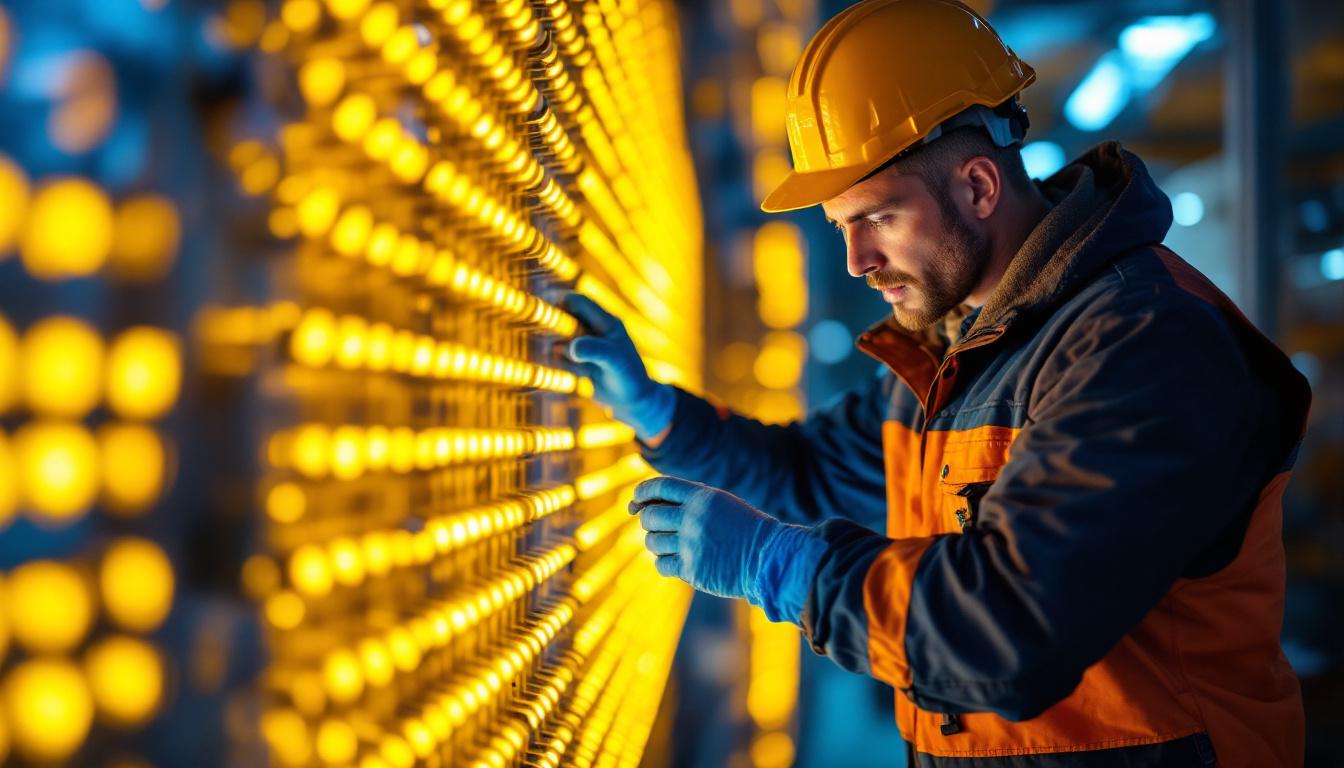
In the ever-evolving world of lighting technology, ballast LED systems have emerged as a popular choice among contractors. These systems not only enhance energy efficiency but also offer improved performance and longevity. For lighting contractors looking to stay ahead of the curve, understanding ballast LED technology is essential. This article provides quick tips to help contractors navigate the intricacies of ballast LED installations, ensuring successful projects and satisfied clients.
Before diving into installation tips, it’s crucial to grasp the fundamentals of ballast LED technology. Unlike traditional fluorescent lighting systems that require a ballast to regulate current, LED technology has evolved to integrate ballasts more seamlessly. This evolution not only enhances energy efficiency but also contributes to the longevity of the lighting systems, making them a popular choice for both residential and commercial applications.
A ballast is an electrical device that provides the necessary starting and operating voltage for fluorescent and HID lamps. In the context of LED systems, ballasts are designed to ensure that LEDs receive the correct current and voltage, optimizing their performance and lifespan. The role of a ballast is particularly significant in preventing overcurrent situations, which can lead to premature failure of the lighting system. By managing the electrical flow, ballasts help maintain stable illumination levels, which is essential for environments that require consistent lighting, such as offices and retail spaces.
There are primarily two types of ballasts used in LED systems: magnetic and electronic. Magnetic ballasts are older technology, often found in legacy systems, while electronic ballasts are more efficient and widely used in modern applications. The transition from magnetic to electronic ballasts has been driven by the need for improved energy efficiency and better performance characteristics in lighting solutions.
Electronic ballasts are preferred for LED installations due to their ability to provide consistent power, reduce flicker, and improve overall energy efficiency. They operate at higher frequencies than magnetic ballasts, which not only enhances the quality of light produced but also minimizes the humming noise often associated with older systems. Understanding the differences between these types will help contractors make informed decisions during installations. Moreover, the compatibility of LED fixtures with specific ballast types is crucial; using an incompatible ballast can lead to reduced performance or even damage to the LED lights. As such, it is advisable to consult manufacturer specifications and guidelines to ensure optimal compatibility and performance in any lighting project.
Successful installation of ballast LED systems requires attention to detail and adherence to best practices. Here are some essential tips to ensure a smooth installation process.
Before beginning any installation, it is vital to assess the compatibility of the existing fixtures with the new ballast LED system. Not all fixtures are designed to accommodate LED technology, and failure to verify compatibility can lead to performance issues.
Check the specifications of both the fixture and the ballast to ensure they align. This includes voltage ratings, wattage, and physical dimensions. If necessary, consult with manufacturers or suppliers for guidance on compatibility. Additionally, consider the age and type of the existing fixtures; older models may require more extensive modifications or even complete replacement to optimize performance with LED systems.
Wiring is a critical aspect of any lighting installation. When working with ballast LED systems, ensure that all wiring is done according to the National Electrical Code (NEC) and local regulations. This not only ensures safety but also enhances the performance of the lighting system.
Use high-quality connectors and cables to minimize resistance and potential failures. Additionally, label all wires clearly to avoid confusion during troubleshooting or future maintenance. It’s also wise to implement a systematic approach to wiring, such as using color-coded wires or a wiring diagram, to facilitate easier identification and repairs. Furthermore, consider the environmental factors where the installation takes place; for instance, if the area is prone to moisture, using weather-resistant materials can prevent deterioration and ensure longevity.
Before securing the ballast and fixtures in place, conduct thorough testing to ensure everything functions correctly. This includes checking the voltage, current, and overall performance of the system. Testing can help identify any issues early on, saving time and resources in the long run.
In addition to basic functionality tests, consider performing a load test to ensure that the system can handle the expected electrical load without overheating or tripping circuit breakers. It may also be beneficial to simulate different operational scenarios, such as dimming or flickering, to ensure the system can maintain performance under various conditions. Documenting these tests can provide valuable insights for future installations and help in maintaining a consistent quality standard across projects.
One of the primary advantages of ballast LED systems is their energy efficiency. Contractors should be equipped with knowledge on how to maximize this benefit for their clients.
Ballast LED systems can significantly reduce energy consumption compared to traditional lighting solutions. By converting to LED, clients can expect to see a reduction in their energy bills, which can be a compelling selling point for contractors.
It’s essential to calculate and present potential energy savings to clients. This can be done by comparing the wattage of existing fixtures to the wattage of the proposed LED system, along with projected usage hours. Providing a clear breakdown of savings can help clients appreciate the long-term benefits of the investment.
Moreover, the longevity of LED systems plays a crucial role in their overall cost-effectiveness. Unlike traditional bulbs, which may need to be replaced frequently, LEDs have a lifespan that can exceed 25,000 hours. This not only reduces the frequency of replacements but also minimizes maintenance costs, making them an attractive option for businesses looking to streamline their operations and reduce downtime.
Many utility companies offer incentives or rebates for businesses that upgrade to energy-efficient lighting systems. Contractors should be aware of these programs and inform clients about potential savings.
Research local utility programs and provide clients with the necessary information to take advantage of these incentives. This not only enhances the value of the project but also encourages clients to invest in energy-efficient solutions.
Additionally, understanding the various financing options available can further facilitate the transition to LED technology. Some contractors may find that offering financing solutions or working with third-party financing companies can alleviate the upfront costs for clients, making the switch to energy-efficient lighting more accessible. By presenting a comprehensive approach that includes potential rebates, financing options, and long-term savings, contractors can position themselves as trusted advisors in the realm of energy efficiency.
Even with high-quality ballast LED systems, maintenance and troubleshooting are inevitable parts of a contractor’s responsibilities. Understanding common issues and their solutions can save time and enhance client satisfaction.
To ensure the longevity of ballast LED systems, regular maintenance is key. This includes cleaning fixtures, checking for loose connections, and inspecting the ballast for any signs of wear or damage.
Establish a maintenance schedule for clients, recommending periodic checks to ensure the system remains in optimal condition. This proactive approach can help prevent larger issues down the line and extend the lifespan of the lighting system.
In the event of issues, contractors should be equipped with troubleshooting techniques. Common problems may include flickering lights, dimming, or complete failure of the system.
For flickering lights, check the connections and ensure that the ballast is functioning correctly. If lights are dimming, verify that the correct wattage ballast is being used. In cases of complete failure, inspect the wiring and connections for any signs of damage.
The market is flooded with various ballast LED products, making it essential for contractors to choose wisely. Selecting the right products can significantly impact the success of a project.
While it may be tempting to opt for lower-cost products, investing in high-quality ballast LED systems pays off in the long run. Quality products typically offer better performance, longer lifespans, and reduced maintenance costs.
Research reputable manufacturers and read reviews to gauge the reliability of their products. Establishing relationships with trusted suppliers can also provide contractors with access to the latest technologies and innovations in ballast LED systems.
The lighting industry is constantly evolving, with new technologies and products emerging regularly. Contractors should stay informed about the latest advancements in ballast LED technology to provide clients with the best options available.
Attend industry conferences, webinars, and training sessions to enhance knowledge and skills. Networking with other professionals in the field can also provide valuable insights into emerging trends and products.
Educating clients about ballast LED systems is crucial for successful installations. Clear communication can help manage expectations and ensure satisfaction.
When discussing ballast LED systems with clients, emphasize the benefits, including energy savings, improved lighting quality, and reduced maintenance costs. Providing a comprehensive overview can help clients understand the value of their investment.
Use visual aids, such as charts or graphs, to illustrate potential savings and performance improvements. This can make the information more digestible and impactful for clients.
While ballast LED systems offer numerous advantages, it’s essential to set realistic expectations regarding performance and timelines. Discuss potential challenges that may arise during installation and provide a clear timeline for the project.
Open communication fosters trust and ensures that clients feel informed and involved throughout the process, leading to a more positive experience overall.
Ballast LED systems present a wealth of opportunities for lighting contractors. By understanding the technology, adhering to best practices during installation, and effectively communicating with clients, contractors can ensure successful projects that meet the needs of their clients.
Staying informed about energy efficiency, maintenance, and product selection will further enhance a contractor’s reputation and reliability in the industry. With these quick tips, lighting contractors can confidently navigate the world of ballast LED technology, providing exceptional service and value to their clients.
Ready to elevate your lighting projects with the best ballast LED systems on the market? Look no further than LumenWholesale, where we provide contractors with the highest quality, spec-grade lighting products at unbeatable wholesale prices. Say goodbye to local distributor markups and hello to superior lighting solutions that meet the highest industry standards. With our hassle-free bulk buying and free shipping, you can ensure your projects shine bright with premium lighting at the best value. Don’t compromise on quality or cost. Wholesale Lighting at the Best Value is just a click away. Experience the LumenWholesale difference today!

Discover the pivotal role of commercial lighting controls in modern construction.

Discover how Solar Landscape Light E can transform your outdoor spaces with eco-friendly illumination.

Discover why rectangular flush mount lights are a must-have for every lighting contractor.

Discover how to transform your home with LED lights by optimizing for maximum efficiency.